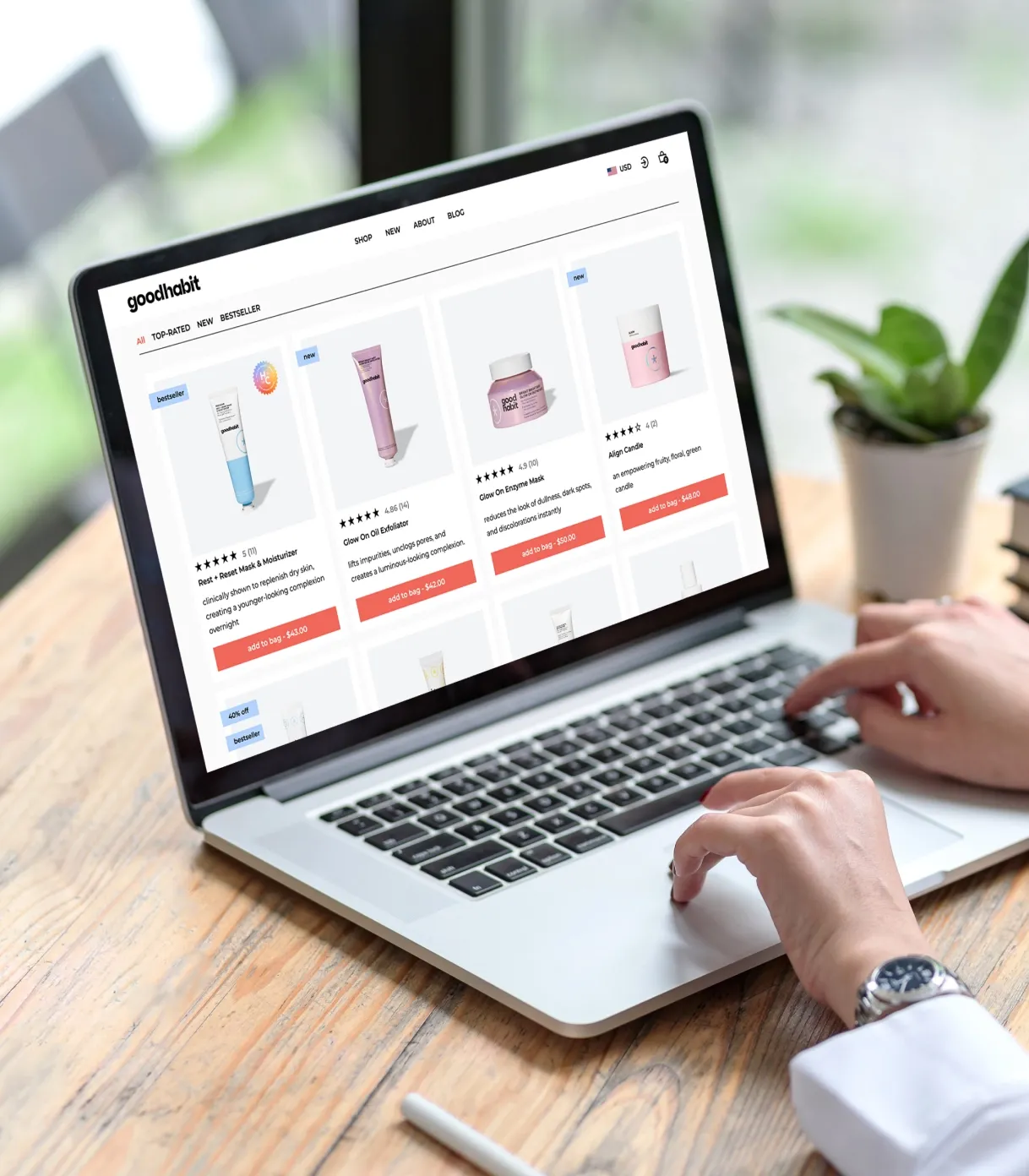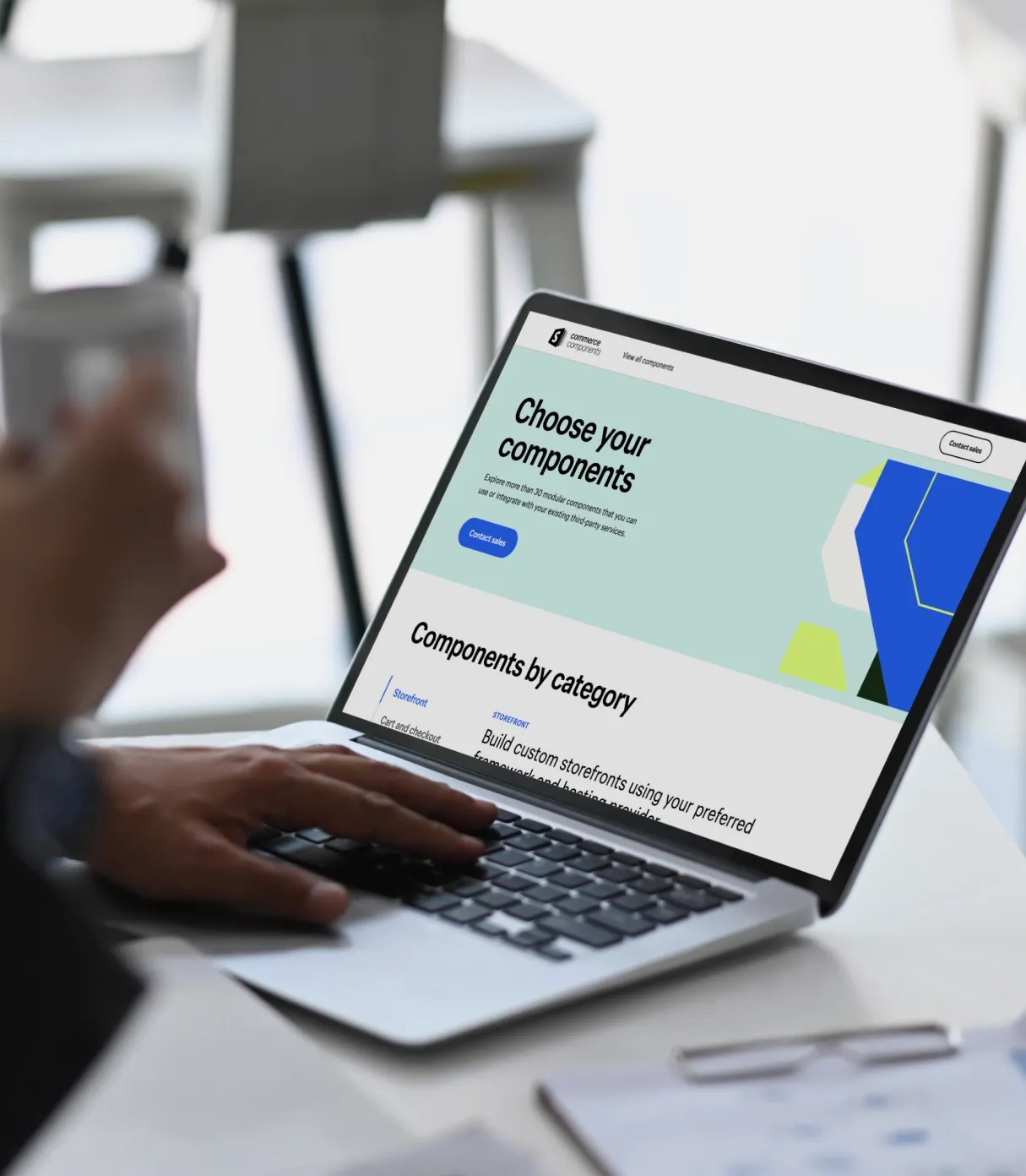
If you’re reading this, you’ve already heard about the benefits mentioned above. And it’s not platform promotion you seek, but more information on the migration process, maybe actionable advice, and guidance. In this article, we’ll walk you through the entire process, from pre-migration planning to post-migration optimization.
Steps to migrate from BigCommerce to Shopify
At some point, ecommerce business owners start feeling restricted by the platform they use. While this can be inconvenient and may require changes, it's a normal part of growth. In this case, the first step would be to research the options. Sometimes, it’s enough to upgrade a plan, but sometimes you’ll need more drastic changes.
If you know that Shopify is the right platform for you, scroll down straight to the process. If you are still in the research phase, and the ease of migration is one of the things you consider, here’s our ecommerce platform analysis you may find helpful.
Compare and contrast Shopify vs BigCommerce vs Magento, paying attention to other aspects as well. It answers your question: “Why move from BigCommerce to Shopify?”
BigCommerce to Shopify migration may seem complex, but the following step-by-step guide will offer a clear roadmap, detailing the key phases and activities involved.
Pre-migration: how to get ready for the change
Pre-migration is a preparation stage. It’s the time to assess your needs, review your data, think about the store improvements, and back up the store. Take a look at what this process includes.
Step 1. Evaluate your current store. It’s your chance to clean up the data before the migration. To be more specific:
Export and review your inventory – current product catalog with all the stock keeping units (SKUs), descriptions, images, and categories.
Export and examine your customer data. Sort them into customer groups, addresses, and purchase history.
Look through your order history. Keep everything you need for reporting and customer service purposes.
Export and save all SEO data. You’ll need all those meta titles, descriptions, alt texts, and URL structures on the new website.
Remove duplicates, correct errors, and standardize data formats in the exported files. Delete obsolete products, inactive customers, and outdated content.
Step 2. Choose a Shopify Plan. Review the pricing and features. Consider your current and future business needs, including additional sales channels, reporting tools, or advanced customization. Choose a plan that best aligns with your requirements and budget.
Pro tip: When choosing a Shopify plan, it's important to do so thoughtfully, as there are specific considerations to keep in mind. On most Shopify plans, you have the flexibility to upgrade or downgrade at any time. If you opt for a 1-year Shopify Plus subscription, you can switch to a 3-year plan whenever you wish. For both 1-year and 3-year Shopify Plus subscriptions, you have the option to downgrade once your commitment period ends.
Step 3. Back up your store. Use BigCommerce’s export tools to back up all critical data. These include:
products
customers
orders
content (blogs, pages)
SEO settings.
Store these backup files securely. Ideally, choose multiple locations – for example, a local drive and cloud storage – to ensure redundancy and protect against data loss.
Step 4. Plan the store structure. Decide whether you’ll use a pre-built Shopify theme or require custom design work. Map out how your products, collections, and content will be organized in Shopify. Pay attention to the main navigation, footer links, and internal linking structure.
Step 5. Set up a temporary domain. It will let you test your store without affecting your current users. Consider setting up a staging environment for more extensive testing if your store is complex.
Implementation: how to migrate BigCommerce products (and all the rest) to Shopify
Then comes the execution phase, when you set up the new store. Migration includes data transfer, design, content, feature adjustments, and testing. This may be the most complicated part since it entails a lot of technical tasks. Just in case, here’s a small reminder: you want to do it before shutting down your current store.
So, how to migrate the BigCommerce products into Shopify? Usually, it takes four steps.
Step 6. Set up a Shopify store. Create a Shopify account. Customize your theme and configure the general settings. Set the correct name, contact information, and payment methods, and adjust the theme if needed.
Step 7. Migrate your data. There are several migration methods, including manual, automated, and professional services. If you choose the first or the second options, make sure to follow all platform instructions. Then, verify data accuracy. Double-check that all products, customers, orders, and other data have been transferred correctly.
Step 8. Set up redirects. Make sure all existing links lead to new pages. It’ll be critical when you shut down the BigCommerce account. Otherwise, users won’t be able to access the content via direct links saved earlier or from indexed pages in the search results.
Step 9. Test your store. If you don’t have a QA engineer to do it, at least check the core functionality on your own. It’s best to check all aspects of the store, from registration to checkout. Shopify has mobile-optimized themes, but check all core pages from a smartphone, too.
Post-migration: how to maintain and manage your new store
Finally, after all the hard work, you are ready to announce an update. It can be a literal announcement in your communication channels or just finishing your operations in BigCommerce and completely moving to Shopify.
Step 10. Launch your new store. Make it available to all the potential shoppers. Closely monitor the store’s performance as it goes live. Testing is essential, but it doesn’t always reveal all the issues.
Step 11. Mobilize customer support. It’s normal to have some issues after migration, though it doesn’t always happen. Ensure you’re available to answer customer inquiries and resolve them promptly.
Step 12. Keep improving your store. Continuously optimize your content and meta tags for search engines. Explore the Shopify App Store to find tools that can enhance the functionality. Use effective marketing strategies to attract new customers and drive sales.
Seven tips on how to migrate BigCommerce to Shopify
Switching from BigCommerce to Shopify is a big decision. And naturally, some business owners will have doubts or try to postpone this process for as long as possible.
Despite all the benefits of Shopify for ecommerce development, a list of risks tends to keep teams wary of big changes. Nevertheless, you can minimize, if not eliminate, potential risks with proper planning and preparation.
So, how to transfer a BigCommerce store to Shopify with minimum stress? With or without assistance from a Shopify web development company, you can rely on the tips below.
#1 Plan ahead
Though it may seem obvious, meticulous planning is core to problem-free migration. Access your needs. Answer two questions:
Why are you migrating?
What do you hope to gain from Shopify?
Start building your migration strategy based on the answers. Outline all the tasks involved, from data migration to theme customization. Also, set a timeline with realistic deadlines for each step. It will add discipline to your intentions.
#2 Choose the desired migration option
There are several ways to handle migration:
Manual migration – doing it yourself. It will be more time-consuming and may appear less reliable.
Automated tools – using specialized services. They offer a standardized procedure with little interference from your side. However, this method may also be less reliable.
Professional services – hiring migration specialists. While this option is more expensive, it’s often the best choice as it provides expert handling of the entire migration process. Specialists ensure a thorough and accurate transfer of data, minimize the risk of errors, and handle complex issues that may arise, allowing you to fully delegate the process and focus on other aspects of your business.
#3 Create multiple backups
It’s best to create multiple backups of your BigCommerce store. Include data on products, customers, orders, and settings. Make sure to store the backups separately to diversify the risks. Consider using cloud storage for off-site backups.
#4 Optimize your store
Plan and configure the setup. Choose a Shopify theme that aligns with your brand and goals in advance. Customize it to match your BigCommerce store’s look and feel. Consider the integrations you’ll need. Connect your apps after migration or explore Shopify’s App Store to enhance the functionality.
#5 Pay enough attention to SEO
Start with redirects from your old BigCommerce URLs to the corresponding Shopify URLs. 301 redirects ensure clients don’t lose you when following old direct links. Yet, you’ll need to work on SEO after migration. Use tools like Google Search Console to monitor redirects and identify any issues. Check SEO settings to secure effective indexing.
#6 Test your store
Releasing updated software without testing is never a good idea. In the case of migration, we’re talking about huge updates that call for checking all aspects of a store. Make sure the design is optimized for mobile and test the functionality on smartphones. Leverage user testing if possible. At least get feedback from friends or family to identify key usability issues.
#7 Launch carefully
Consider a soft launch. Open your store only to a limited number of people before making it available to all potential users. It’s a perfect way to give your store a test run before a big opening. After the migration is over, define and track key metrics like traffic, conversions, and customer satisfaction. Work with user feedback and follow trends to make adjustments.
Time and cost estimates of BigCommerce to Shopify migration
There’s hardly a person who can share a precise migration estimate without knowing the details. We’ll outline the factors influencing the time and cost. This information should help you understand the expenses better and set realistic expectations before you move to planning.
Migration time can vary depending on:
Store size. The number of products, customers, and orders impact the required time.
Data complexity. Overall complexity, along with specific customizations and integrations, also affect migration timelines.
Migration method. Manual migration is generally slower compared to using automated tools or professional services.
The factors influencing the cost are similar:
Migration method. Manual migration is often free. Automated tools and professional services come with extra expenses.
Data complexity. More complex stores may require additional time and effort. These, in turn, lead to higher costs.
Additional services. If you need help with theme customization, app integration, or other services, it will add to the overall cost.
So, you are choosing between manual migration, free but time-consuming, or paid services. The latter can entail using automated tools or partnering with experienced professionals to guide you through the migration. No scenario works best for all cases. Consider your budget, store complexity, and actual ability to handle the migration.
Why choose DigitalSuits for BigCommerce to Shopify migration
We offer a comprehensive suite of Shopify services for all needs. It includes Shopify migration as well. Data migration, theme customization, app integration, and ongoing support are on this list.
What can you expect from BigCommerce to Shopify Migration with DigitalSuits?
Safe and reliable transfer of your store. You can be confident that all valuable data will be protected throughout the transition.
Data security at all stages – from signing an NDA to server security, limited and controlled accesses, and adhering to GDPR standards.
An established and transparent workflow. You can receive an estimate after sharing some details. Expert guidance at every stage is guaranteed.
DigitalSuits Shopify developers work with projects of different complexity, covering all design and technical aspects. Our team has a proven track record of delivering successful migrations. We also guarantee a result-driven approach and customer-centricity in every ecommerce project.
To sum up
Migrating from BigCommerce to Shopify usually seems a daunting task. However, discovering and using the benefits Shopify can offer is worth your time, especially if you already have a step-by-step guide to migrating from BigCommerce to Shopify. A single look at the list of companies using Shopify tells a lot about the capabilities and potential of this platform.
With careful planning and execution, migration will be a rewarding experience. There’s no need to restrain yourself if your business has outgrown its current platform. Besides, you always have a choice to handle migration on your own or request assistance. If you opt for the latter, feel free to contact us. The DigitalSuits team will gladly manage the migration.
Frequently asked questions
Can I keep my existing design when moving to Shopify?
Yes, you can typically keep your existing design. Shopify offers a wide range of customizable themes you can tailor to match your current BigCommerce store’s look. You can also hire a designer to fine-tune the theme to make it look perfect.
What common challenges might I face when migrating, and how can I avoid them?
The most common challenges are data loss or corruption, SEO issues, and integration compatibility. However, you can avoid all of these problems through solid planning and careful implementation. Keep several data backups, don’t rush to launch a store without testing, and seek professional support if needed.
How do I ensure that my Shopify store is fully functional after the migration?
The best way to do it is thorough testing. Check all functional and performance aspects of your store before making it available to a vast audience. Test product pages, checkout, payment processing, and other core elements of the store across various devices. Get user feedback if possible. You can involve other team members or even your friends.
Is it possible to keep my email marketing lists and integrations after migration?
Yes, it’s generally possible to keep your email marketing lists and integrations. Many popular email marketing platforms integrate with both platforms. Still, it’s best to check with your provider to confirm compatibility. If not, make sure to download your lists before migration. You can find an alternative in Shopify’s App Store and upload your base.
What should I do to ensure SEO is not affected during migration?
Implement 301 redirects from your old BigCommerce URLs to lead to the new Shopify pages. Conduct an SEO audit to identify potential issues. Also, check if your content is optimized for search engines.






































Was this helpful?
0
No comments yet